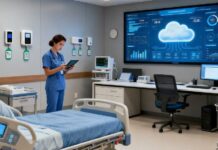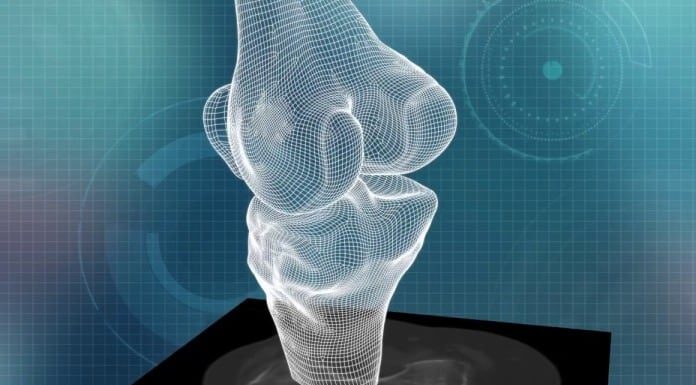DaVita Kidney Care, a provider of kidney care services, has acquired three haemodialysis centres from Malaysian dialysis provider Sinar Indentiti to further expand its care of kidney patients in the country.
With the addition of Sinar Indentiti's three new centres, DaVita now operates a total of 24 centres in both peninsular and east Malaysia.
In Malaysia, kidney disease is a growing health concern. According to the Malaysian Society of Nephrology, over 30,000 patients receive life-sustaining dialysis treatments, a population that has grown nearly 12% year over year.
DaVita Kidney Care Asia-Pacific region president Atul Mathur said that DaVita is committed to raising the standard of care for chronic kidney disease patients in Malaysia.
"As we continue to seek opportunities to bring DaVita's industry-leading outcomes to chronic kidney disease populations in the country, we believe Malaysia's kidney patients ultimately benefit," Mathur added.
"As we continue to seek opportunities to bring DaVita's industry-leading outcomes to chronic kidney disease populations in the country, we believe Malaysia's kidney patients ultimately benefit."
Sinar Indentiti nephrologist and clinic medical director with DaVita Dr Gan Wee Hin said that South-East Asia's growing population is resulting in an increase of patients suffering from chronic kidney disease.
"I strongly believe by joining DaVita – an organisation that has vast experience and an impressive record all over the world – we can improve clinical outcomes in our group of patients," Dr Hin added.
DaVita has witnessed an improvement in clinical outcomes each year since 2000 in the US and has consistently established clinical results that are among the best in virtually every category in the kidney care industry.
These outcomes help drive lower mortality rates and fewer hospitalisations, directly supporting DaVita's aim to improve patients' health and quality of life.
DaVita Kidney Care is a division of DaVita HealthCare Partners (DVA). As of 31 December 2013, DaVita Kidney Care operated or provided administrative services at 2,074 outpatient dialysis centres in the US, serving approximately 163,000 patients.
The company also operated 73 outpatient dialysis centres located in ten countries outside the US.
DaVita Kidney Care acquires Sinar Indentiti clinics in Malaysia
Intersurgical Critical Care Product Range
Intersurgical provides a comprehensive range of breathing systems for invasive and non-invasive ventilation, oral care and a full range of accessories for use in the critical care environment.
We offer neonatal breathing systems dedicated to the most popular ventilators used in neonatal intensive care areas.
These have been designed to be ready for use straight from the pack. Our neonatal breathing systems have expanded recently with a new range for Acutronic fabian machines.
An extended range of Bilevel breathing systems is also available. Designed to suit the needs of most dedicated Bilevel ventilators, options for adult and paediatric patients are offered with and without a CO2 leak port.
For non-invasive ventilation we offer the StarMed respiratory hoods, CPEEP valves and CPAP breathing systems, plus the FaceFit NiV mask.
Accessories for breathing systems and humidification, including a tube support, flow sensors, and an extensive range of connectors and elbows,
Finally, to help target ventilator associated pneumonia (VAP), Intersurgical offers a range of Oral Care toothbrushes and kits.
Iowa hospital to deploy Allscripts Sunrise to help improve patient outcomes
Shenandoah Medical Center, located in Shenandoah, Iowa, plans to install Allscripts Sunrise electronic health record (EHR) solutions as part of its efforts to improve the efficiency of the hospital system, manage patient populations and serve the healthcare needs of patients in south-west Iowa.
The hospital has chosen Allscripts' key products and services to provide a single EHR for emergency, inpatient and ambulatory care settings.
The Allscripts Sunrise suite, which includes Allscripts Sunrise Ambulatory Care, forms the core and foundation of the EHR for successful strategies for connected community, accountable care and population health.
Allscripts Sunrise integrates clinical and revenue cycle management across the campus and the community in one unified database.
It offers clinician-specific workflows that help drive adoption of clinical decision support which can lead to improved outcomes.
In addition to Allscripts Sunrise, Shenandoah Medical Center will also deploy Allscripts Sunrise Financial Manager, an integrated financial management solution that helps drive efficiencies, capture revenue and improve margins across the enterprise.
Allscripts Sunrise Financial Manager comprises tools that help organisations meet the challenges of constantly changing regulations and payment models.
Shenandoah Medical Center president and CEO Karen Cole said the mission of Shenandoah Medical Center is to make a difference by providing exceptional patient care.
"We believe the Allscripts Sunrise platform is the right, integrated solution to help our organisation meet the complex healthcare demands of an evolving patient population, and to improve outcomes and promote wellness in the communities we serve," Cole added.
Shenandoah Medical Center has also selected Allscripts to provide end-to-end application remote hosting services for acute, ambulatory and transactional applications.
Allscripts president and CEO Paul Black said the company is very pleased with its new relationship with Shenandoah Medical Center.
"Allscripts Sunrise's open, connected and integrated inpatient/outpatient/revenue cycle platform is an exceptional foundation to meet accountable care goals, realise population health strategies and deliver on care objectives that will drive positive outcomes for patients within Shenandoah's campus and throughout the greater south-west Iowa community," Black added.
California hospital selects BridgeHead HDM for rapid recovery of MEDITECH data
Children's Hospital Central California, a not-for-profit children's hospital located in Madera, California, has deployed BridgeHead Software's health data management (HDM) platform for swift recovery of MEDITECH data.
BridgeHead's HDM integrates with Children's NetApp storage environment, backup and archive with single data repository to ensure optimised protection and recovery for all hospital data.
It also protects MEDITECH with integrated capabilities to ensure coherent data capture across MEDITECH's complex, multi-server environment.
According to the company, the hospital's IT staff were impressed with BridgeHead's integrated capabilities for NetApp, which orchestrate data capture using the MEDITECH Backup Facility (MBF) API and NetApp's snapshot technologies.
Children's Hospital Central California senior network engineer Brian Welch described BridgeHead as the backup traffic cop and the glue that holds the hospital's data management platform together.
"Since our DR copy is stored to disk, Children's has positioned itself for a rapid recovery of MEDITECH data obtained with lowered administrative burden and disk storage cost," Welch added.
"Children's has positioned itself for a rapid recovery of MEDITECH data obtained with lowered administrative burden and disk storage cost."
Children's Hospital Central California has medical staff of more than 550 physicians. It is the busiest children's hospital in the state.
The hospital is one of the ten largest hospitals of its type in the US, with 356 licensed beds.
NetApp strategic alliances manager for healthcare Charles Mallio said the company is pleased to work with BridgeHead Software to deliver the solution to Children's Hospital Central California.
"BridgeHead's integration with the MEDITECH API and our operating system Data ONTAP makes it an ideal data management solution for MEDITECH customers running on NetApp," Mallio added.
"By using the BridgeHead solution, Children's Hospital Central California is able to take full advantage of NetApp's data and storage management features while ensuring application-consistent recovery points for their MEDITECH data."
Florida medical centre deploys first Hitachi SCENARIA 128-slice CT scanner
Sarasota Interventional Radiology, a full service outpatient surgery centre located in Sarasota, Florida, has installed the state's first Hitachi SCENARIA 128-slice, lower dose CT scanner.
The 128-slice CT has advanced clinical capabilities and unique features to provide a more comfortable experience for all patients, from paediatric, to oncological, to elderly patients, and offers low radiation exposure.
The new state-of-the-art SCENARIA CT is designed with integrated dose reduction technologies and reduced kV imaging which together provide a lower amount of radiation exposure.
The SCENARIA CT from Hitachi also delivers faster scan times with enhanced image resolution.
Among the unique features equipped in SCENARIA's comprehensive package is its cardiac imaging capabilities.
The new SCENARIA system, which is non-invasive, employees the latest dose-saving technology to use less radiation dose for patients with a high risk of lung cancer and heart disease.
Sarasota Interventional Radiology CEO and medical director Dr Gerald Grubbs said the centre has listened to the concerns of its patients and has taken proactive steps in providing a safer means of CT imaging.
"We are very proud and excited to be the first imaging centre in the Sarasota and Bradenton market to deliver this technology," Dr Grubbs added.
Sarasota Interventional Radiology has selected Hitachi Medical Systems to provide its patients and community with a safe and advanced tool for CT imaging.
Both have entered into a cooperation relationship to further refine CT technology. The partnership aims to decrease the radiation dose for all diagnostic and interventional uses of CT to as low as possible.
Hitachi CT Products marketing director Mark Silverman said, "We are very excited about our relationship with Sarasota Interventional Radiology and are proud to see SCENARIA installed in a facility dedicated to excellence."
Louisiana hospital installs Toshiba’s Infinix DP-i and hybrid OR suite
Ochsner Medical Center, located in New Orleans, Louisiana, has added new equipment from Toshiba America Medical Systems to further improve patient safety and comfort in interventional cardiology.
The hospital has installed a new hybrid OR suite and an Infinix DP-i cardiovascular X-ray system to conduct transcatheter aortic valve replacement (TAVR) and other coronary and peripheral procedures.
The Infinix DP-i is designed to perform vascular, neuro and cardiovascular procedures, allowing clinicians to treat a variety of patients. The systems include high-resolution flat-panel detectors.
Toshiba's Infinix DP-i enables physicians to deliver faster exams and provide more patient-focused care. Its flexibility with two C-arms optimises room utilisation and makes it easy to switch from one to the other during a single procedure.
Ochsner Medical Center interventional cardiology section head and cardiac catheterisation laboratory co-director Dr Tyrone Collins said that when the hospital was considering expanding its cardiovascular capabilities and adding a new Toshiba hybrid OR suite, there was no question about the technology that best met its needs.
"Toshiba's cardiovascular X-ray system design provides unmatched flexibility with better access to the patient, and the ability to record and archive images," Dr Collins added.
"Toshiba's cardiovascular X-ray system design provides unmatched flexibility with better access to the patient, and the ability to record and archive images."
"As a long-time partner of Toshiba, we particularly value the company's service and support approach."
The hospital also uses Toshiba's CAT-880B hybrid catheterisation table in its hybrid OR lab to support endovascular as well as open surgical interventions.
Toshiba X-ray vascular business unit director David Sloop said that the Infinix-i was designed to offer unparalleled access to the patient, ensuring clinicians are in optimal ergonomic orientation during any procedure.
"Combined with dose management optimisation technologies such as Next Generation AIP, the system allows providers to improve visualisation and quickly and accurately diagnose and treat patients safely," Sloop added.
Ochsner Health System is a non-profit, academic, multi-speciality healthcare delivery system. It employs more than 14,000 employees, over 900 physicians in more than 90 medical specialities and subspecialities and conducts over 300 clinical research trials annually.
Integrated Medicine Alliance empowers patients using Emmi Solutions technology
Integrated Medicine Alliance, located in Red Bank, New Jersey, US, has selected Emmi Solutions as its partner to provide programmes that enable patients to better assess their medical condition and determine the appropriate care pathway.
Emmi Solutions' suite of web-based, multimedia programmes provides reliable, repeatable, actionable information to patients to support clinical conversations between healthcare providers and patients.
Emmi programmes utilise visuals and simple language to simplify complex medical information and help patients manage their chronic health conditions.
Select programmes are specially designed to support shared decision making by asking about preferences, capturing goals, and explaining risks and benefits associated with treatment options.
Integrated Medicine Alliance CEO Bill Febus said that as one of New Jersey's largest participating practices in patient centered care initiatives, the organisation is always looking for new ways to revolutionise how it can deliver health care with better patient outcomes and greater efficiency in mind.
"Patients should be empowered to make their own healthcare decisions and these programmes help them to do so by providing accurate information when and how they want it."
"Patients should be empowered to make their own healthcare decisions and these programmes help them to do so by providing accurate information when and how they want it," Febus added.
Patients can share the interactive programmes with family and friends, which guides individuals to have meaningful conversations about treatment with all involved in the process.
Integrated Medicine Alliance founding partner Dr Jan Glowacki said these types of solutions are essential to Integrated Medicine Alliance as it continues to grow and looks to offer its patients exemplary care.
"Emmi Solutions will help support our ongoing efforts to transform primary care here in Monmouth County," Dr Glowacki added.
Integrated Medicine Alliance encompasses three walk-in care centres, seven primary care practices, a physical therapy centre, a diagnostic centre, a wellness centre and more.
Arizona hospital deploys BESLER’s Transfer DRG revenue recovery service
The University of Arizona Medical Center, a 479-bed hospital located in Tucson, Arizona, has selected BESLER Consulting, a provider of comprehensive revenue integrity services to healthcare organisations, to assist in the identification of Medicare Transfer DRG underpayments.
Under the Medicare reimbursement regulations, a discharging hospital is paid at a reduced rate when certain patients are transferred to other providers to continue treatment. In some cases this reduced payment is not justified by the actual post-discharge care.
Beyond the transferring hospital's control, some patients are not treated as planned after being transferred. This results in a reduction in the transferring hospital's Medicare reimbursement.
According to BESLER, properly reviewing the post-transfer care that patients receive and identifying underpayment situations can provide hospitals with a significant revenue boost.
"We're looking forward to working with The University of Arizona Medical Center on the recovery of Transfer DRG underpayments."
BESLER uses proprietary software to efficiently work through the identification and follow-up tasks required to validate the accuracy of post-acute care transfer billing and to ensure compliance.
BESLER also offers the BVerified suite of web-based solutions, which allows providers to identify, prioritise and recover Medicare underpayments in-house.
BESLER president and CEO Jonathan Besler said the company's proprietary Transfer DRG technology allows it to review every transfer claim to ensure its clients receive all of the revenue they've earned.
"We're looking forward to working with The University of Arizona Medical Center on the recovery of Transfer DRG underpayments," Besler added.
New Jersey hospital chooses Meru’s wireless solution to improve patient care
Running smoothly: Fast and effective joint replacements
Article By – Rajiv Ghatikar, Vice President & General Manager, ASEAN / Australasia Siemens PLM Software
Siemens PLM Software is a business unit of the Siemens Industry Automation Division, a business unit of the Siemens Industry Automation Division, and a leading global provider of product lifecycle management (PLM) software & services with 6.7 million licensed seats and 69,500 customers worldwide. Headquartered in Plano, Texas, Siemens PLM Software works collaboratively with companies to deliver open solutions that help them turn more ideas into successful products.
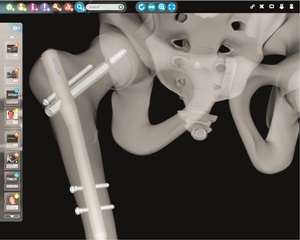
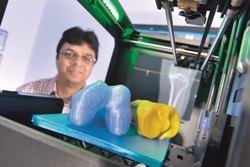
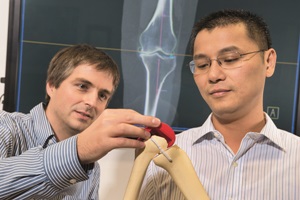 Team center offered by Siemens PLM Software, provides a unified platform for managing everything from a patient’s scans straight through to the eventual prosthesis. It manages where scans go to for image segmentation, to where that segmentation is stored, where surgical planning is conducted and filed, where the final patient-matched jig is kept, how and under what circumstances can the doctor log on and access patient files – becoming the interface between the digital world and the data required for manufacturing it.
Team center offered by Siemens PLM Software, provides a unified platform for managing everything from a patient’s scans straight through to the eventual prosthesis. It manages where scans go to for image segmentation, to where that segmentation is stored, where surgical planning is conducted and filed, where the final patient-matched jig is kept, how and under what circumstances can the doctor log on and access patient files – becoming the interface between the digital world and the data required for manufacturing it.





